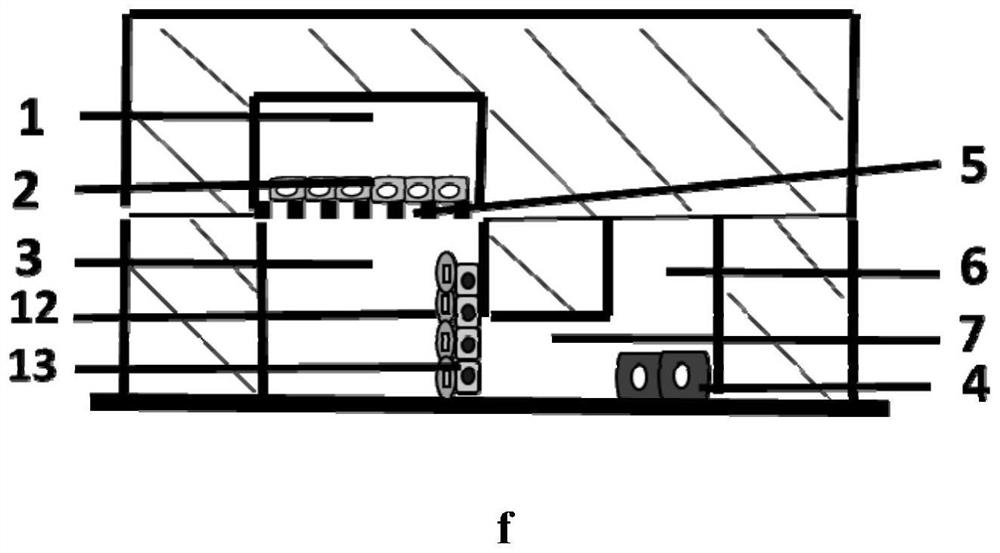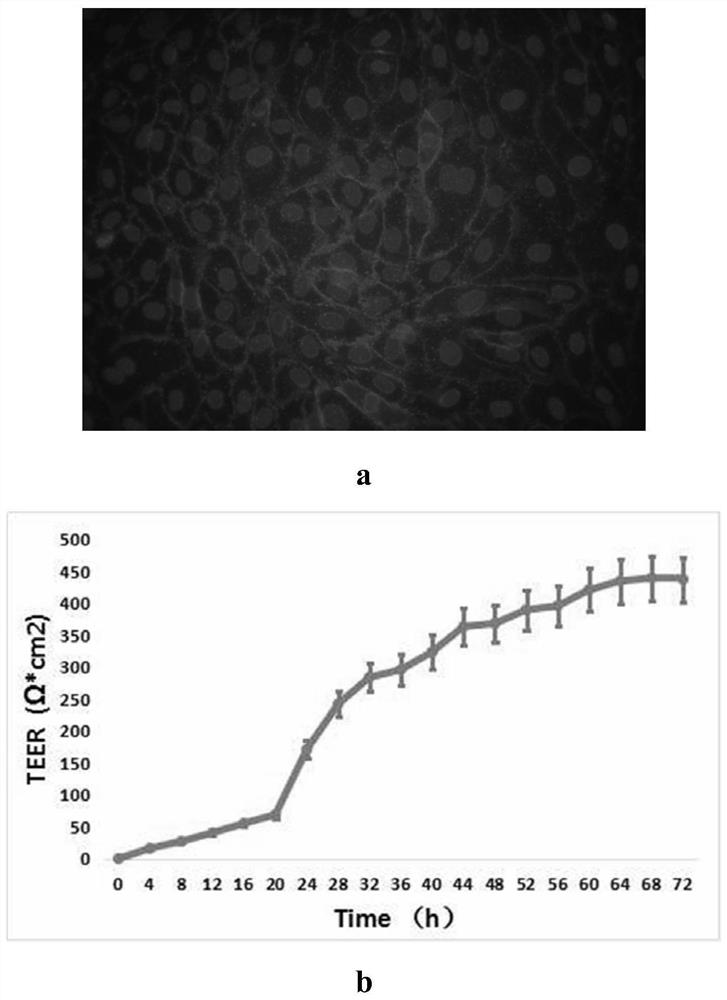Liver-Brain Barrier System Based on Microfluidic Chip to Simulate Metabolic Processes in vivo
A microfluidic chip and blood-brain barrier technology, which is applied to the measurement/testing of microorganisms, the method of supporting/immobilizing microorganisms, the culture device of tissue cells/viruses, etc., can solve the problem of in situ observation of mesenchymal stem cells, It is difficult to construct a blood-brain barrier model and other issues to achieve the effect of resolving secondary vaccination and reducing the failure rate
- Summary
- Abstract
- Description
- Claims
- Application Information
AI Technical Summary
Problems solved by technology
Method used
Image
Examples
Embodiment 1
[0043] Design and fabricate microfluidic chips, such as figure 1 shown.
[0044] The microfluidic chip is mainly composed of a top chip, a porous filter membrane, and a bottom chip. sealing; the top chip is formed by connecting the U-shaped main channel 1 of the top chip and the main channel entrance 11 of the top chip;
[0045] The bottom chip consists of left main channel 3, right main channel 6, collagen channel 7, collagen channel entrance 8, bottom chip left main channel entrance 9, and bottom chip right main channel entrance 10. Collagen channel 7 is connected to the left Main channel 3, right connected to right main channel 6;
[0046] The main channel 1 of the top chip is connected to the main channel 3 on the left side of the bottom chip through the porous filter membrane 5;
[0047] The main channel 3 on the left side of the bottom chip is I-shaped, the main channel 6 on the right side of the bottom chip is U-shaped, and the collagen channel 7 of the bottom chip c...
Embodiment 2
[0056] Blood-brain barrier penetration evaluation application of drugs.
[0057] After 24 hours, add paclitaxel (PTX) 2.34nM, capecitabine (CAP) 80μM, temozolomide (TMZ) 40μM cell culture medium to culture respectively, after 48 hours of treatment, CCK-8 cells were treated for U87 cells in the right main channel Vitality assays, results such as image 3 As shown in b, perform Live / Dead staining, the result is as follows image 3 as shown in a. It can be seen that after paclitaxel is metabolized by the liver, the cytotoxicity is reduced, and it is difficult to pass through the blood-brain barrier, so the cytotoxicity is further reduced. After capecitabine is metabolized by the liver, its cytotoxicity is significantly enhanced, and it can pass through the blood-brain barrier system. Temozolomide has no significant change in cytotoxicity before and after hepatic metabolism, and it can easily pass through the blood-brain barrier. The drug is converted into metabolites through ...
PUM
| Property | Measurement | Unit |
|---|---|---|
| height | aaaaa | aaaaa |
| height | aaaaa | aaaaa |
Abstract
Description
Claims
Application Information
 Login to View More
Login to View More - R&D
- Intellectual Property
- Life Sciences
- Materials
- Tech Scout
- Unparalleled Data Quality
- Higher Quality Content
- 60% Fewer Hallucinations
Browse by: Latest US Patents, China's latest patents, Technical Efficacy Thesaurus, Application Domain, Technology Topic, Popular Technical Reports.
© 2025 PatSnap. All rights reserved.Legal|Privacy policy|Modern Slavery Act Transparency Statement|Sitemap|About US| Contact US: help@patsnap.com



